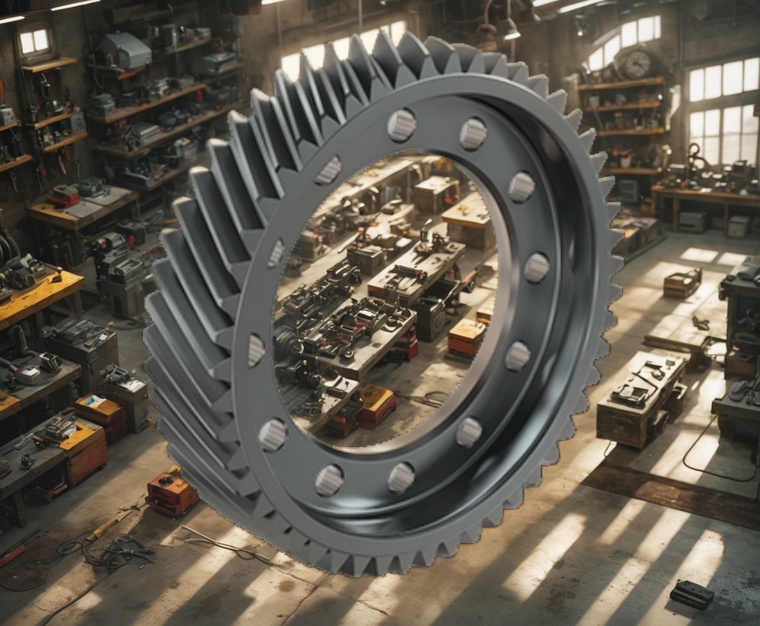Ring gear technology has long been a cornerstone of mechanical engineering, enabling the seamless transfer of power in various industrial applications. As a vital component in systems like differentials and transmissions, a ring gear ensures efficient torque distribution and reliable performance under high stress. In this article, we explore the intricacies of ring gear design, manufacturing processes, and its role in modern machinery, drawing from advancements in precision engineering. One of the key aspects is how innovations in materials and production techniques have elevated the durability and efficiency of ring gears, making them indispensable in sectors such as automotive and heavy industry.

Gear manufacturing plays a crucial role in determining the quality and longevity of ring gears, involving sophisticated processes that blend artistry with advanced technology. This process typically begins with the selection of high-grade materials, such as specialized steel alloys, which offer exceptional tensile strength and resistance to wear. Manufacturers employ precision machining techniques, including CNC cutting and heat treatment, to create gears with exact tooth profiles that minimize friction and enhance load-bearing capacity. For instance, in the production of differential ring gears, engineers focus on achieving a perfect helical or spiral tooth design, which allows for smoother operation and reduced noise compared to older straight-cut designs. This attention to detail in gear manufacturing not only extends the lifespan of the component but also improves overall system efficiency, contributing to energy savings in applications like vehicle drivetrains. By integrating state-of-the-art testing protocols, such as fatigue and load simulations, companies ensure that each ring gear meets stringent industry standards, thereby preventing failures in critical environments.
Differential ring gear, a specialized type of ring gear, is particularly vital in automotive applications, where it facilitates the distribution of engine power to the wheels. This component works in tandem with the differential assembly to allow wheels to rotate at different speeds, especially during turns, which is essential for vehicle stability and control. The design of a differential ring gear involves careful engineering to handle varying torque loads, often incorporating features like angled teeth for better meshing and reduced backlash. In high-performance vehicles, these gears are made from advanced alloys that withstand extreme temperatures and pressures, ensuring reliable operation even in demanding conditions such as off-road driving or racing. Gear manufacturing techniques for differential ring gears have evolved significantly, with automation and digital modeling allowing for more precise and customized production. This evolution not only enhances the gear’s performance but also supports broader industry goals, such as reducing environmental impact through improved fuel efficiency and lower emissions. As a result, modern differential ring gears are not just functional parts but key contributors to safer and more efficient transportation systems.
Beyond automotive uses, ring gear applications extend to aerospace, renewable energy, and industrial machinery, where their robust design supports heavy-duty operations. In wind turbines, for example, large ring gears are employed in the main gearbox to convert the low-speed rotation of the blades into high-speed energy for generators, highlighting the importance of precision in gear manufacturing to handle massive loads and variable wind conditions. Statistics from industry reports indicate that properly manufactured ring gears can reduce mechanical losses by up to 20%, directly impacting the cost-effectiveness of energy production. Additionally, the integration of smart technologies, such as sensors for real-time monitoring, allows for predictive maintenance, further extending the life of these components. This proactive approach in gear manufacturing helps companies like those in the precision engineering sector to deliver products that align with global sustainability efforts. For instance, our exploration of helical gear designs, which share similarities with ring gears, reveals how optimized tooth profiles can lead to quieter operations and enhanced energy efficiency, making them ideal for eco-conscious industries. As we delve deeper, it’s clear that the ongoing innovations in this field are driving the future of mechanical systems, with ring gears at the forefront.
In conclusion, the advancements in ring gear technology, particularly in gear manufacturing and differential ring gear designs, underscore the progress in engineering that supports modern industrial demands. These components not only provide the backbone for efficient power transmission but also embody the principles of durability, precision, and innovation. By focusing on high-quality materials and rigorous testing, manufacturers are able to produce ring gears that outperform expectations, contributing to safer, more reliable machinery across various sectors. As industries continue to evolve, the role of ring gears will only grow, paving the way for more sophisticated and sustainable solutions in the years to come.



评价
Clear filters目前还没有评价